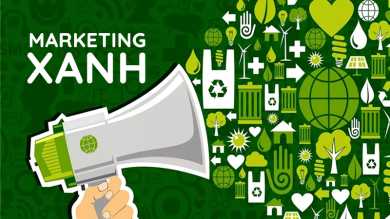I never knew I lived in an oil town until I went looking for the concealed infrastructure of fossil fuel production. What’s also becoming visible is a new architecture of planetary sapience that’s enabling and hastening the green transition.
The weird thing about growing up in oil country was that I had no idea I was growing up in oil country. I thought we lived in Hollywood. Sure, Culver City didn’t have the glitz and glamor of the parts of town where the movie stars lived and partied; it was a film-industrial suburb, where they went to work. But it was still Los Angeles after all, not West Texas or Saudi Arabia, where one expects to find pumpjacks bobbing in the sun.
But before LA became Tinseltown, it was an oil town. And though the oil wells that loom even today atop the nearby Baldwin Hills should have been a clue, it never really dawned on me that LA still is. Throughout my childhood, over the years I lived elsewhere, and today now that I’ve moved back, those pumps have been extracting oil 24 hours a day, every day of the year, some less than half a mile from my home. Though the city’s grandees no longer gather to drink and sing “Yes it’s oil, oil, oil / that makes LA boil,” the industry remains. For now.
Baldwin Hills juts up 500 feet from the flat expanse of the Los Angeles Basin, the result of millennia of seismic activity along the Newport-Inglewood Fault, a dextral strike-slip fault that runs for 47 miles from Culver City through Signal Hill to Newport Beach. The fault, formed some 30 million years ago when the Pacific plate collided with the North American plate (an intersection that now sits at the San Andreas Fault), expresses on the surface as a series of low, irregular hills. Below the surface, seismic activity created a series of oil and gas reservoirs, including the Inglewood Oil Field.
LA’s geologic past is more than a niche interest for rockhounds and petroleum engineers. Deep time processes shaped the city’s contemporary urban geography, and still do. Rather than grow along transportation lines — the typical pattern of residential sprawl during the 19th and 20th centuries — LA’s new developments often followed oil strikes. Subterranean discoveries helped to produce the city’s famous suburbanized sprawl — a network of “black gold suburbs” that oozed away from the city’s urban core.
The hydrocarbons that pooled in structural traps throughout the area began as microscopic plankton and other organisms during the Pliocene and Miocene epochs, roughly 3-12 million years ago. The city we know today thus began to take shape with the burial of ancient life on an ancient seafloor. So if you’re stuck in traffic here, you can curse the decaying diatoms of eons past.
“The weird thing about growing up in oil country was that I had no idea I was growing up in oil country. I thought we lived in Hollywood.”
Or perhaps it is fairer to blame the oilmen who coaxed the liquified fossils to the surface. Had the oilfields been left fallow, we might’ve had a different city, one easier to traverse and live in. But the relentless force of capitalism enticed the nation’s early petroleum engineers to perforate the landscape, opening channels for oil to spray forth. “The inside of the earth seemed to burst out through that hole,” Upton Sinclair wrote of a Los Angeles strike in “Oil!” (1927). “[A] roaring and rushing, as Niagara, and a black column shot up into the air, two hundred feet, two hundred and fifty—no one could say for sure—and came thundering down to earth as a mass of thick, black, slimy, slippery fluid.” Sinclair’s book is a work of fiction, but scenes like this played out countless times as the oil industry metastasized across Southern California in the early 20th century.
Exploration of the rugged topography of Baldwin Hills began in 1916, but it took until April 1924 for The Los Angeles Times to report that “the wildcat wells” were “showing promise.” This, the boosterish paper smirked, caused “the petroleum pessimists [to] appear to be a trifle down in the mouth.” By July, conditions underground in Baldwin Hills “warrant a thrill,” the Times asserted, and visitors to the well “would not be surprised if a very productive oil sand would be found.”
“NEW OIL POOL TAPPED” blared an exuberant headline at the end of September that year. Standard Oil Company began commercial production in Baldwin Hills with 175 barrels a day. The most “significant feature” was the oil’s “unusually shallow depth”; at just over 2,000 feet deep, Standard’s LA Investment No. 1-1 well was “the shallowest production in any of the present-day fields of Southern California.” Seismic luck, it seemed, had blessed those coastal-scrub-covered hills.
The Inglewood Oil Field grew rapidly. By February 1925, “experienced oil men” considered it “one of the most desirable fields … in the entire State,” and Standard Oil had begun construction on a pipeline to its refinery in El Segundo (a city so named because it was the second refinery Standard Oil built in California). It was cheap and easy drilling for shallow, quality oil. Associated Oil, Fifty-Seven Petroleum, Oscar Howard, Mohawk Oil, Pacific, Pan-American Petroleum, Petroleum Midway, Superior Oil, Universal Oil, Wilshire Oil and W.W. Bush all joined the rush. Edward L. Doheny’s Petroleum Securities Company drilled one well — it only had to go down 1,414 feet deep — in a remarkable 18 days.
Pumps worked up a frenzy and black gold surged from the depths. Two thousand barrels per day came out of the ground in March 1925, 3,400 in April. Inglewood had “suddenly leaped into prominence as one of the most active oil fields in the State.” By May, 39 wells were producing nearly 19,000 barrels per day. In July, there were 109 wells pumping 110,000 barrels daily, and by then it had become the largest oil producer in California. In just one week that month, the field’s workers got nine new wells up and running and increased overall production by 12.5%, or 12,300 barrels per day.
Oil was a booming industry for the whole state in those years. Throughout the 1920s, California produced between 20% and 25% of the global oil supply. In 1923, oil from the Signal Hill field alone doubled the ship traffic in the Panama Canal, and in 1924, oil surpassed agriculture as California’s largest industry. “California leads universe in petroleum production,” the Times breathlessly boasted in early 1925. Production grew with such vigor and speed, with new fields discovered seemingly all the time, that one Californian complained at the time that the industry was “being choked, and strangled, and gagged, by the very thing most wanted—oil!”

An oil field near Toluca St. in Los Angeles c. 1895. (Huntington Library)
The more than 1 million Angelenos who live within five miles of the Inglewood Oil Field might agree with the description of being choked, strangled and gagged by fossil fuels. Today, the 1,000-acre oil field hosts 436 active producing wells (and many more inactive wells), the largest urban oil extraction complex in the United States. Nationwide, according to a 2017 paper in Environmental Health Perspectives, 17.6 million Americans live within a mile of an active oil or gas well, or a little more than 5% of the population. In Los Angeles County, approximately a third of residents live that close to one of the region’s 3,890 active or 3,475 idle oil wells.
Surrounded in all directions by miles of residential neighborhoods, this extractive-industrial site hosts, in addition to the production wells, a constellation of other infrastructure necessary for this work: water injection wells, water injection pumps, pump jacks, pipelines, roads, storage tanks and sundry buildings. It is an eyesore that I see from my doorstep — but much more than that too. It is an environmental burden, a font of toxicities, a cause of illness. Living near oil and gas facilities is associated with negative effects on lung function, reproduction, birth outcomes, cardiovascular health, mental health and more. It harms domesticated animals and wildlife. In Los Angeles, as in the United States as a whole, these health risks fall disproportionately on low-income, predominately Black and Latino communities, which are already disproportionately exposed to environmental harms.
The negative impacts don’t stop there, of course. Once the fossil fuels extracted from my neighborhood’s edge are ignited, the resulting greenhouse gases sever their connection to the place where they spent millions of years resting below the hills. The gases — carbon dioxide and methane, in particular — become an undifferentiated part of the atmosphere’s overall chemistry. Once there, the carbonic remains of beings that once lived and died in what’s now LA act on the entire Earth system.
Sentinel Peak Resources, Inglewood’s current owner, touts the “environmental benefits” of “our locally produced oil” — a product I’ve yet to see bottled and sold at the farmers’ market — which doesn’t need to be imported on polluting tankers from the Middle East or South America. In a twisted way, the argument holds some truth. In a larger way, however, it deflects attention from the more significant truth about the toxic effects of all fossil fuels no matter the origin.

Detailed view of oil fields around Los Angeles on a map by Edna B. and Clarence Forncrook, 1922. (Library of Congress)
The 5700 block of Pico Boulevard, between South Genesee and Spaulding, is about as typical a streetscape for an LA boulevard as anything in the city. The south side of the street has a boxing gym, a kitchen cabinet store, a flooring wholesaler and a body shop; all the buildings save one are a single story.
The north side is entirely taken up by a multistory office tower. Behind the dirty-beige tower’s open picket black metal fence, the lawn is mowed but there are few other signs of life. The gates are all padlocked and the guard post is empty — at least on two recent visits. There are no windows in the building’s exterior, nor does it have a roof. These features would be weird for an office building or a residence but totally normal, I suppose, for a structural shell meant to conceal at least 50 oil and gas wells.
The Packard well site, built by Standard Oil in 1967, once had a visitors’ lobby and viewing gallery to show off its operations to a curious public, but they have been closed for many years. From the sidewalk, you can make out the remnants of the informational displays through the lobby’s grimy glass walls, but the only front-facing exterior sign today reads “private property.” Walking around the whole site, a pedestrian could easily have no clue what’s happening within — which is, of course, the whole point.
Stroll along the fenced perimeter and just before you reach the stretches of lovely Spanish colonial revival and storybook homes with drought-friendly gardens, there are signs with more specific, but still minimal, information on the drilling shell’s exterior. E&B Natural Resources Corp. warns passersby that “H2S gas may be present” and that trespassers “will be prosecuted.” (H2S is hydrogen sulfide, a colorless, poisonous gas.) If you know how to interpret the National Fire Protection Association hazard diamond posted on a gate, you’d also learn that the site contains chemicals that can “cause significant irritation,” “be ignited under almost all ambient temperatures” and are unstable under high temperatures. A simple “SA” on the diamond indicates the presence of “simple asphyxiants.”
“If you’re stuck in traffic here, you can curse the decaying diatoms of eons past. Or perhaps it is fairer to blame the oilmen who coaxed the liquified fossils to the surface.”
Behind the structure’s 100-foot camouflaged walls, a drill rig moves around the site on tracks, passing with ease from well to well. In 2008, the most recent data I’ve seen, this seemingly innocuous faux-office pumped 491,000 barrels of oil and 763 million cubic feet of natural gas. Despite all this industrial work, the Packard operation is eerily quiet. From out front, you don’t hear oil pumping, just the sound of oil-burning cars and trucks bouncing over LA’s rutted roads.
Head west on Pico for a mile and a half and at the corner with Doheny (named for the founding father of the LA oil industry) you arrive at Cardiff Tower drill site, a 175-foot-tall hollow sheath concealing 40 active wells. The neighbors here are highly specific to the Pico-Robertson Jewish community: Aish HaTorah, an Orthodox outreach organization; Merkaz HaTorah Community Kollel, an Orthodox study hall; a kosher dairy restaurant, The Milky Way, owned for decades by Steven Spielberg’s mother; and, beside a 76 gas station, Bais Chaya Mushka, a Chabad elementary school for girls. The school is a replica of 770 Eastern Parkway in the Crown Heights neighborhood of Brooklyn, which was once the home of Rabbi Menachem Mendel Schneerson, the late leader of the Chabad-Lubavitch Hasidic sect. (The school is one of at least 35 replicas of “770,” as the original Gothic Revival building is known, erected around the world to honor the Lubavitcher Rebbe.)
Even the tower itself was “architecturally designed” to hide within the neighborhood’s religious community. The structure’s four walls are decorated by two high arches meant to evoke a synagogue tower. If you squint, I guess, they recall the rounded tablets of the Ten Commandments — though there’s nothing holy going on in this Potemkin temple. The only actual synagogue tower nearby belongs to B’nai David-Judea Congregation, but its building, including the tower, was originally built in 1931 as a movie theater.
A synagogue with the facade of a theater, a school with the facade of a Brooklyn house, an oil drilling operation with the facade of a synagogue: uncanny architecture that gives no hint of the buildings’ actual uses. Strangest of all, perhaps, is that there is active oil drilling just 125 feet from people’s homes, according to the environmental justice group STAND-L.A., a distance that seemed generous to me when I visited recently. Apartments abut the alleyway behind the tower. Some residents have windows that look onto its ivy-covered walls. Without leaving their homes, neighbors could easily read the number for the emergency hotline on the sign by the door to report a leak.

Oil wells near Venice on the edge of the Pacific. (Library of Congress)
In March, a SpaceX Falcon 9 rocket took off from Vanderberg Space Force Base — a 150-mile drive up the California coast from LA — carrying 53 satellites, which it released into orbit about two hours after liftoff. The final payload deployed by the mission, Transporter-10, was a 770-pound spacecraft named MethaneSAT. The satellite, which is owned and operated by the Environmental Defense Fund, in partnership with the New Zealand Space Agency and other organizations, is on a mission to detect and quantify methane emissions, a greenhouse gas around 30 times as potent as CO2 over a century.
Colorless and odorless, methane gas can leak unnoticed for a long time. But MethaneSAT’s high-resolution maps, focused on oil and gas producing regions, will be available just days after data collection, allowing oil and gas operators and regulators to identify and address them rapidly. “The beauty of having MethaneSAT,” one scientist not affiliated with the project told NPR, is “we don’t have to ask [oil companies’] permission nicely to go on site and make measurements, right?”
As it orbits the Earth 15 times a day, MethaneSAT has two infrared spectrometers aimed down at Earth, over 350 miles below. Once fully operational, the spectrometers’ mercury cadmium telluride focal planes will be able to estimate methane emissions at the granular level of just a square kilometer. To measure change over time, the satellite can revisit targets from above every three to four days, scanning for even minute amounts of excess methane in the air — down to three parts per billion.
As important as its scientific precision is the data ownership model. Many Earth observation satellites are privately owned and produce proprietary data, but MethaneSAT is different: Its mission is to make the data freely available to the public; the goal is neither research nor profit but climate action — as they put it, their hope is to “catalyze methane reductions by creating unprecedented transparency.”
“A synagogue with the facade of a theater, a school with the facade of a Brooklyn house, an oil drilling operation with the facade of a synagogue: uncanny architecture that gives no hint of the buildings’ actual uses.”
Like the insidious gases seeping from Cardiff Tower, the Packard drill site and Inglewood Oil Field, the ways in which anthropogenic emissions interact with the planet’s biogeochemistry are mostly invisible. Even grasping the totality of that complex interaction is beyond the human mind, which often conceals the true nature and dynamics of industrial processes taking place right in front of so many of us.
To comprehend it requires, as Benjamin Bratton has put it, a planetary-scale “smart exoskeleton, a distributed sensory organ and cognitive layer capable of calculating things.” It is only through a vast network of sensors, like MethaneSAT, and supercomputers, like the Google cloud computing systems that process and analyze its data, that we can start to understand what fossil fuel consumption and other features of industrial modernity have done, are doing and will do to our Earth. What Bratton calls “planetary sapience,” the “planetary self-awareness” enabled by the proliferating instruments of measurement and computation, represents in this way an engine of revelation.
Untangling the hidden web of relations that work their way through systems of systems at the scale of the planet to a degree of usable precision is what necessitates intricate methods of knowledge production: satellite-based remote sensing, tower-based ecosystem observation, ice-core drills, advanced data analytics, general circulation models. Even someone living in the places most affected by climate change, like the Arctic, can’t intuit planetwide change from personal experience. “The knowledge of ‘climate change,’” as Bratton observes, “is an epistemological accomplishment of planetary-scale computation.”
Our species has experienced climatic fluctuations before — the Younger Dryas and the 8.2-kiloyear event, for instance — but the current one is the first we’ve understood in real-time as a planetary phenomenon. For the first time in Earth’s history, the Earth has evolved technologies of perception and computation capable of making itself knowable as a whole, not just as the experience of its many parts. The unveiling of our world as a planet makes clear that all its many parts are interconnected and sum to an even greater total.
Technological and scientific advancement have taught us more and more about the details and the whole. They have also uncovered how much damage humans have caused. Tragically, the discoveries of the harms came long after the harms began. Even more tragically, we have understood the consequences of our actions for long enough to change course, and yet we have just begun. Planetary sapience has revealed so much that was once invisible, but revelations haven’t yet spurred sufficient action.

The Central Los Angeles Oil Field in 1905. (Huntington Library)
A few months ago, a friend and I did the ultimate LA thing: We drove to the mall. Rumbling into the Beverly Center’s massive parking structure, I steered my old Prius up ramp after ramp toward the top level. We were on a quest that didn’t involve browsing Gucci, Prada, Burberry or any of the other luxury brands within the mall’s sparkling interior. The best way to see what we were looking for was from the top of the parking structure.
Fifty-four tightly clustered, slanted oil wells — the last of the Salt Lake Oil Field — sit snuggly between Macy’s, Bloomingdale’s and San Vicente Boulevard. In fact, the Beverly Center’s odd, curved footprint is designed to accommodate the drilling site, which is hidden by a wall along the street. The wells are almost completely invisible, dwarfed by the mammoth mall and the sprawling Cedars-Sinai Medical Center across the street — the hospital where I was born and where I later dropped my friend off to meet his wife for an ultrasound appointment.
His son was born there in May. There’s reason to hope that he will grow up in a cleaner LA than I did — that his birth opposite the polluting pumps comes as LA’s long romance with oil dies.
“Whether hydrocarbons are pumped in LA or Lagos, Brazil or Bahrain, so long as they are burned anywhere on Earth, they will affect everywhere on Earth.”
In January last year, Los Angeles County passed an ordinance to prohibit new oil and gas extraction and phased out what remains within the next two decades. The law, daftly and disappointingly, doesn’t touch most of Inglewood Oil Field, but it is still heartening: Local political action built upon planetary sapience.
A healthy Los Angeles requires a habitable planet. Shutting down oil and gas drilling here without concomitantly shutting down oil and gas use merely outsources our dirty work. It is little different than dressing up oil derricks as shlocky but friendly neighborhood buildings: Out of sight and out of mind. Moving fossil fuel production somewhere else might have significant health benefits for local populations here, but it doesn’t address the other planetary-scale impacts of greenhouse gas emissions. (And “somewhere else” usually means places with weaker environmental protections for residents, doing nothing to alleviate the local impacts of production.) We live on an interconnected planet without an “over there”: Whether hydrocarbons are pumped in LA or Lagos, Brazil or Bahrain, so long as they are burned anywhere on Earth, they will affect everywhere on Earth.

Union Oil Bell No. 18 well in Santa Fe Springs, in LA County, in 1923. (Huntington Library)
In 2002, after years of community activism, public meetings and stakeholder consultations, the California Department of Parks and Recreation released a master plan for Baldwin Hills that set out a vision to convert the area into “one big park.” Planning for a future when “oil production is [no longer] economically feasible,” the document envisions that “100 years from now the area is a vibrant, living place that meets the complex needs of people, wildlife and habitat.”
Most perspicaciously, the 100-page plan recognizes that the “hawk perch[ed] on an arroyo willow” and the “sagebrush dampened by a recent winter rain” don’t exist apart from the human world of asphalt and air conditioners. Nature and culture don’t stand in opposition but overlap and intertwine. All communities are multispecies communities, from the hundreds of species living in my gut microbiota to the red-tailed hawks that hover and hunt throughout Baldwin Hills. “We recognize the need for a new definition of ‘park,’” the planners wisely conclude — “one that moves far beyond old, common perceptions [of nature versus people] to encompass both nature and people, recognizing the connectivity between both.”
Lovely words, but that was over 20 years ago. We’ve made scant progress. Rather than parkland, every day I still see pumpjacks “nodding tirelessly and slowly,” as Reyner Banham wrote in 1971, “like a herd of extra-terrestrial animals with inscrutable minds of their own.”
Nevertheless, the fight for a better future goes on. On a warm, clear Saturday morning in April, my family and I joined the Nature Nexus Institute and other volunteers for several hours of habitat restoration in a small state park on the northern slope of Baldwin Hills. While my boys looked for lizards, I uprooted non-native black mustard, wild radish and garland daisies and replaced them with native toyon, bladderpod and California bush sunflower, which explode in vibrant yellow blossoms after the winter rains.
Sweating in the California noon sun, I peered up the rise and was struck by how much land still needed to be restored. Even after the eventual political and legal triumph over the fossil fuel industry, every oil well needs to be plugged and the whole of Inglewood Oil Field must undergo environmental remediation — an expensive and lengthy process. But as the master plan ironically notes, “The years of oil production have protected the Baldwin Hills as open space.” After a century of destructive extraction in the hills above my home, we now have a chance to start over, a chance “to reclaim and restore these dramatic ridgelines and hidden canyons to provide a place of rare peace and tranquility.”
By Jonathan Blake - NoemaMag









